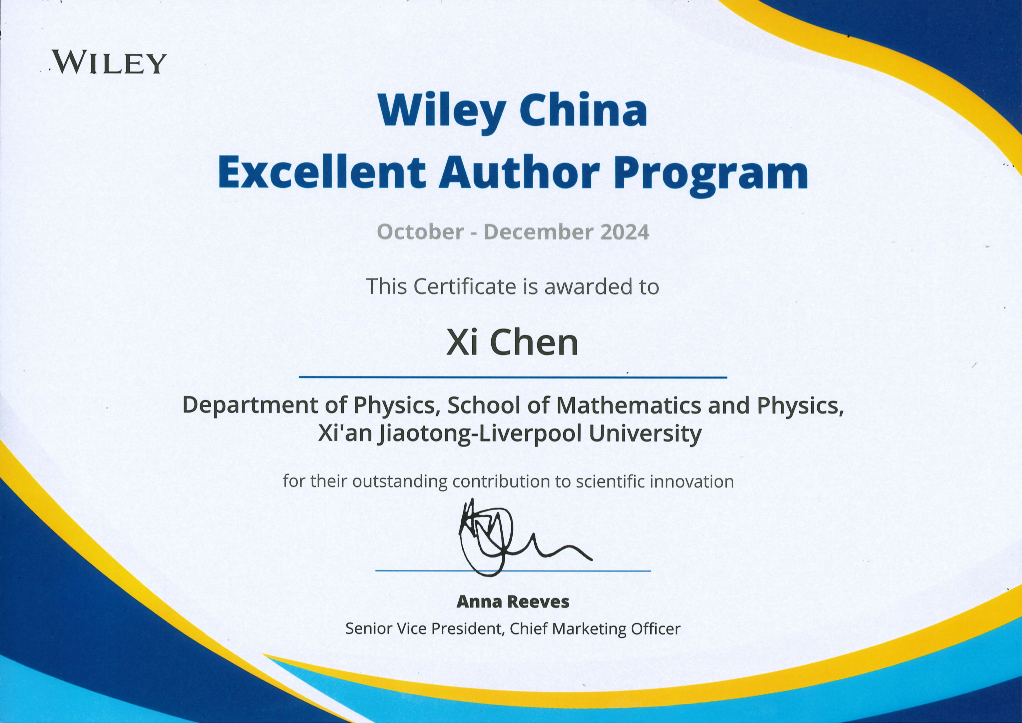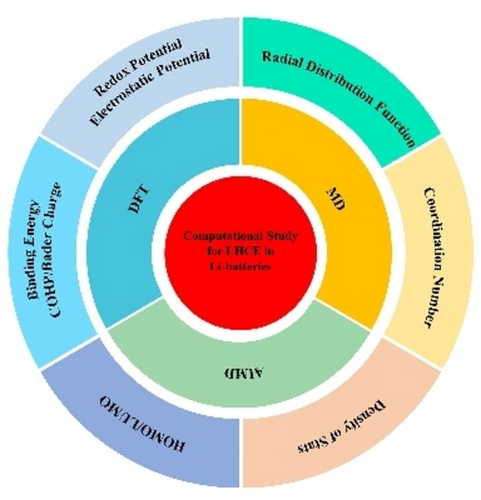08 Jul 2025
Recently, Dr Xi Chen and Dr Hao Yu from the Department of Physics at the School of Mathematics and Physics, Xi’an Jiaotong-Liverpool University (XJTLU), were recognised by the Wiley China Excellent Author Program for Q4 2024. Their co-authored review article, A Computational Review on Localized High-Concentration Electrolytes in Lithium Batteries, was published in ChemElectroChem, a journal under the prestigious Wiley publishing group. The article has garnered over 1,900 full-text views and downloads, highlighting its growing influence within the international battery research community.

Dr Hao Yu(Left) and Dr Xi Chen (Right)
As electric vehicles and large-scale energy storage systems gain momentum, there is an increasing demand for lithium batteries with higher energy density and improved safety. Among the many approaches being explored, innovations in electrolyte systems have become central to efforts in enhancing battery performance. One of the most promising developments in this area is the use of Localized High-Concentration Electrolytes (LHCE), which have attracted global attention for their outstanding electrochemical properties.

This review provides an overview of state-of-the-art computational progress in the studies of localised high-concentration electrolytes, focusing on the application of computational techniques to analyse the redox stability, solvation structures, and interface characteristics of lithium batteries with localised high-concentration electrolytes. Integrated with experimental approaches, complementing each other, computational methods are believed to be conducive to understanding the working mechanism and designing localised high-concentration electrolytes for better lithium batteries in the future.

Figure: Graphical Abstract of the Paper.This review paper presents the latest computational progress in understanding the characteristics and working mechanism of LHCEs in lithium batteries, using techniques such as density functional theory (DFT), molecular dynamics (MD) simulations, and ab initio molecular dynamics (AIMD).
“We hope this review offers researchers and industry practitioners a clear framework to better understand the role of computational techniques in gaining an in-depth understanding of the LHCE electrolytes’ micromechanics and the correlation between their microstructure and macroscopic behaviour,” said Dr Chen. “These techniques can help optimise the electrolytes’ composition and structure to enhance battery performance and safety, providing theoretical explanations and guidance for experimental design for lithium batteries.”

Dr Yu also noted, “Our Physics Department encourages interdisciplinary research, combining theory, computation, and application to empower cutting-edge research in fields such as batteries, new energy, and information technology.”
Dr Chen’s research focuses on computational modelling and experimental characterization of secondary batteries and low-dimensional materials, with particular emphasis on interface and surface properties. Dr Yu’s expertise lies in theoretical studies of spintronics and magnetic topological materials.
By Qinru Liu
Pictures provided by Xi Chen and Hao Yu
08 Jul 2025







